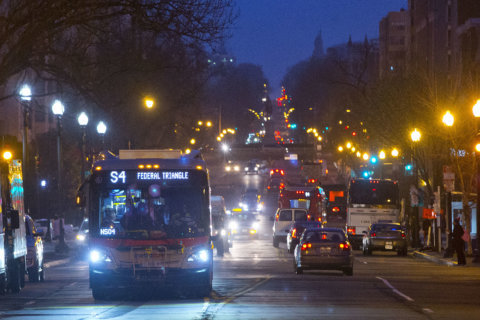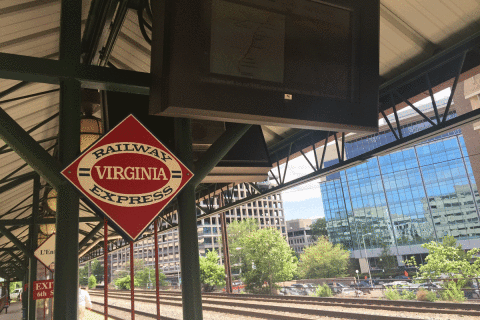WASHINGTON — A long-awaited new safety measure is set to roll out on local commuter railroads by the end of the year — meeting a federal deadline — but it is not yet in place on MARC or VRE.
Positive train control, known in the industry as PTC, is meant to serve as a backup to train crews to slow or stop trains to avoid speeding and collisions. The National Transportation Safety Board has found it could have prevented deadly crashes, such as an Amtrak train that sped off a curve in Philadelphia or an Amtrak train that slammed into a CSX freight train in South Carolina.
In the South Carolina crash, signals were down so that crews could install pieces of this positive train control system.
The system detects which segment of track a train is on and whether it is exceeding speed limits. The system also determines whether there is another train on the tracks ahead.
Virginia Railway Express (VRE) has finished installing all of the necessary hardware on its trains and trained all 108 employees who need to understand how to use the system, according to newly published tracking data from the Federal Railroad Administration.
While VRE is optimistic about meeting the Dec. 31 federal deadline, it is awaiting discussions next month with freight railroads CSX and Norfolk Southern that control the tracks to confirm that the freight company’s systems and testing plans will allow the PTC launch this year.
In Maryland, MARC had installed just over half of the required pieces of hardware on its trains but had yet to begin training employees on how to use the system as of June 30.
“By working closely with CSX and Amtrak, MDOT MTA is on track to have Positive Train Control up and running on the entire MARC system by the December 31, 2018, deadline,” Maryland Transit Administration spokeswoman Sandy Arnette said in an email.
The Federal Railroad Administration just awarded MARC a grant worth up to $2 million to add the required positive train control features to nine more locomotives and train employees on all three MARC lines.
MARC and VRE each operate on tracks owned by Amtrak and freight railroads CSX and Norfolk Southern. The host railroads are responsible for installing the positive train control system along the tracks and on their own trains.
Amtrak has promised to have the system activated on the tracks it controls by the end of the year, and has raised the possibility of stopping service across large swaths of the country where it operates on freight railroads that may not yet have the system activated.
CSX has the system operational on 61 percent of its 9,713 miles of track required nationwide. Norfolk Southern has the system operational on 52 percent of its 8,028 miles of track required. Norfolk Southern has completed installation of the system on 109 of 132 track segments, while CSX has completed 87 of 133 segments.
Amtrak already has the system installed on the tracks it owns between D.C. and Boston, including the tracks used by MARC’s Penn Line. It has several more track segments to go in Michigan, but has the system activated on 607 miles of track.
Neither MARC nor VRE has begun testing the system yet with trains carrying riders.
“Safety is our top priority. As the FRA report shows, MDOT MTA has made significant progress on the implementation of Positive Train Control with 81 percent of our locomotives now equipped with PTC,” Arnette said.
That is 63 of MARC’s 78 locomotives with work completed as of June 30.
Nationwide, 66 percent of freight track miles and 24 percent of passenger rail miles have positive train control up and running now.
Overall, the rail industry estimates installing and implementing the positive train control system across the country will end up costing $10 billion over the last decade or so.
MARC ticket changes
MARC has also recently rolled out more rider-facing technology and other changes.
Work begins next week to expand and renovate the BWI Thurgood Marshall Airport Rail Station, which means the existing waiting area will be shut down for more than a year.
During the $4.7 million renovation, a temporary station area at the north end of the platform will have bathrooms available.
MARC ticket machines are now in the parking garage. Amtrak continues to sell its own tickets at the station for people who have not reserved in advance.
As of July 1, MARC tickets are only sold through new Maryland Transit Administration ticket machines rather than Amtrak ticket machines. MARC’s lease for the use of the Amtrak machines expired June 30.
The new MARC machines have been installed at a number of stations. In order to use a senior, disability or Student Advantage discount or use SmartBenefits for MARC train tickets or MTA Commuter Bus passes, riders must register in advance.






